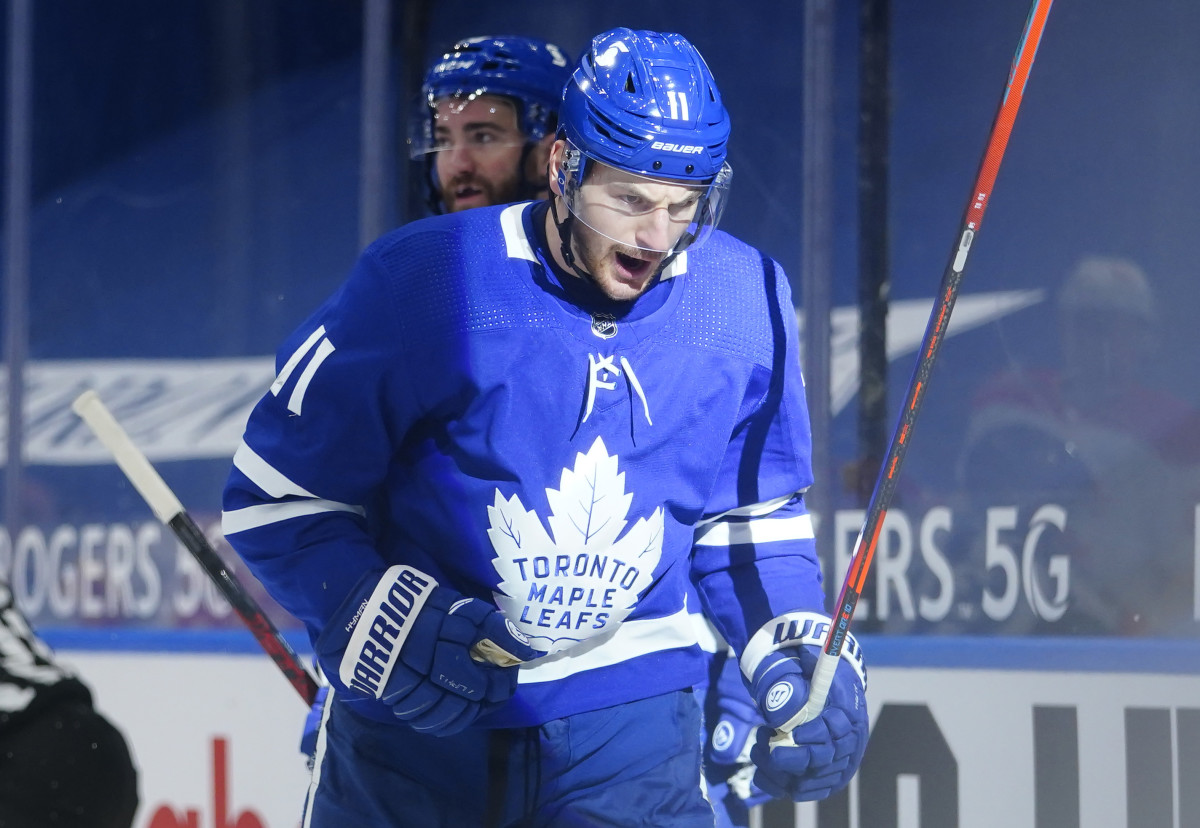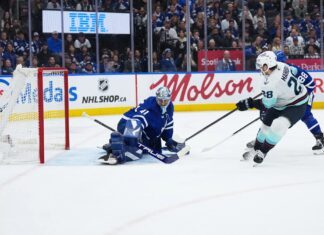Who among us isn’t a big fan of Zach Hyman?
With the work ethic, speed, forechecking ability, and strength that make him a force to be reckoned with, the Toronto native has been a valuable contributor for parts of six seasons. It’s clear that this is a good player who will be difficult to replace.
The Leafs can technically afford to keep Hyman if they would like to do so. Assuming Kerfoot is taken in the expansion draft, my rough estimate is that they have about $10.5 million to fill three spots: first-line winger, third-line center, and a second goalie. That number can fluctuate a bit based on their other lineup decisions, but $10-11 million is a good ballpark figure of what they have to work with. They could certainly find a way to fit Hyman under the cap, but that would obviously mean that they would have less to spend elsewhere.
Now, just because they can sign Hyman doesn’t mean that it’s a good idea. While the cap hit is always important, the bigger question might be term in this case — he’s a 29 year old who will likely be under contract until he’s 35. Given his injury history and playing style, there is plenty of risk that Hyman will decline quickly. However, he is definitely a valuable player at this moment, and if the Leafs want to replace him, they’re going to have to spend a fair amount in the process.
I expect the Leafs to be interested in acquiring a winger with a $4 million to $6 million cap hit. I’ve heard some say, “If you’re going to spend that much, you might as well just sign Hyman,” but this undersells the importance of term.
Ultimately, if Hyman hits the open market, it only takes one team to make a massive offer that the Leafs can’t possibly match. In other words, if he hits the open market, Hyman is probably headed elsewhere.
What are the Leafs (potentially) losing in Zach Hyman?
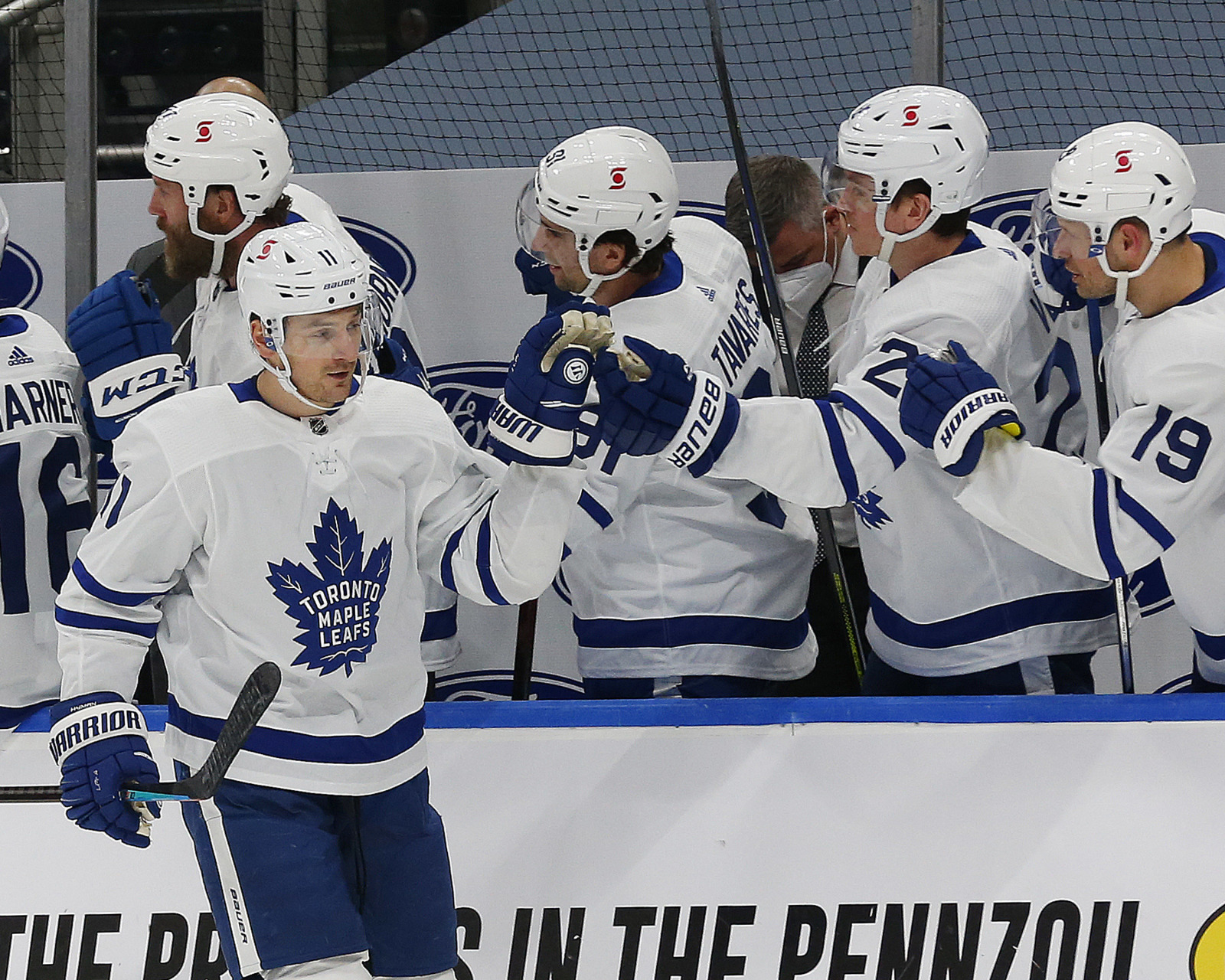
Let’s start by taking a look at the type of player that Zach Hyman is. Offensively, Hyman ranks 91st out of 388 forwards in terms of 5v5 points per minute over the past three seasons, which is quite impressive. He uses his speed effectively to be a problem for opposing defenders on the forecheck, creating turnovers with his combination of speed and strength. He scored 33 points in 43 games this year — good for a 63-point pace over 82 games.
By Evolving Hockey’s RAPM, Hyman is a consistent driver of expected goals for. His work ethic helps to drive extra possession time for his team in the offensive zone, where he’s not afraid to get to the net to generate high-danger scoring chances. While he typically grades out as below average defensively, RAPM was higher on that part of his game this year. He’s also been effective on the penalty kill for years.
There is no question that the Leafs would bring Hyman back for the right term and price. However, he’s made “just” $10 million or so over his career, and he’s earned the right to explore unrestricted free agency. While the Leafs can afford him, they also don’t want to be hamstrung by a burdensome long-term deal.
Hyman’s playoff production is worth talking about. He’s scored just five goals and 13 points in 32 career playoff games, which is low for a future $5+ million forward. He hasn’t always been 100% healthy come playoff time — and he hasn’t always played on the power play — but he also recorded just one point against the Habs. He does not own a particularly good shot, so if he’s not getting chances in the net-front area, he’s probably not scoring much.
There is reason to be concerned about how Hyman’s skillset will age. He’s not a high-end shooter or playmaker, and he relies on maximum speed and strength to be successful. Wayne Simmonds is a great example of a player who was quite valuable in his prime but fell off around his 30th birthday. While I expect a 32-year-old Hyman to be better than the current version of Simmonds, I do think there is a risk that his performance could fall off in a year or two.
All that being said, it’s clear that the Leafs will need some sort of replacement for Hyman. They may not be able to equal his production, but they could use a player who is strong on the forecheck and able to win 50-50 battles and get to the net. The replacement doesn’t necessarily have to play on the power play, but he should be able to pair nicely with high-end playmakers like Mitch Marner and William Nylander.
Brandon Saad
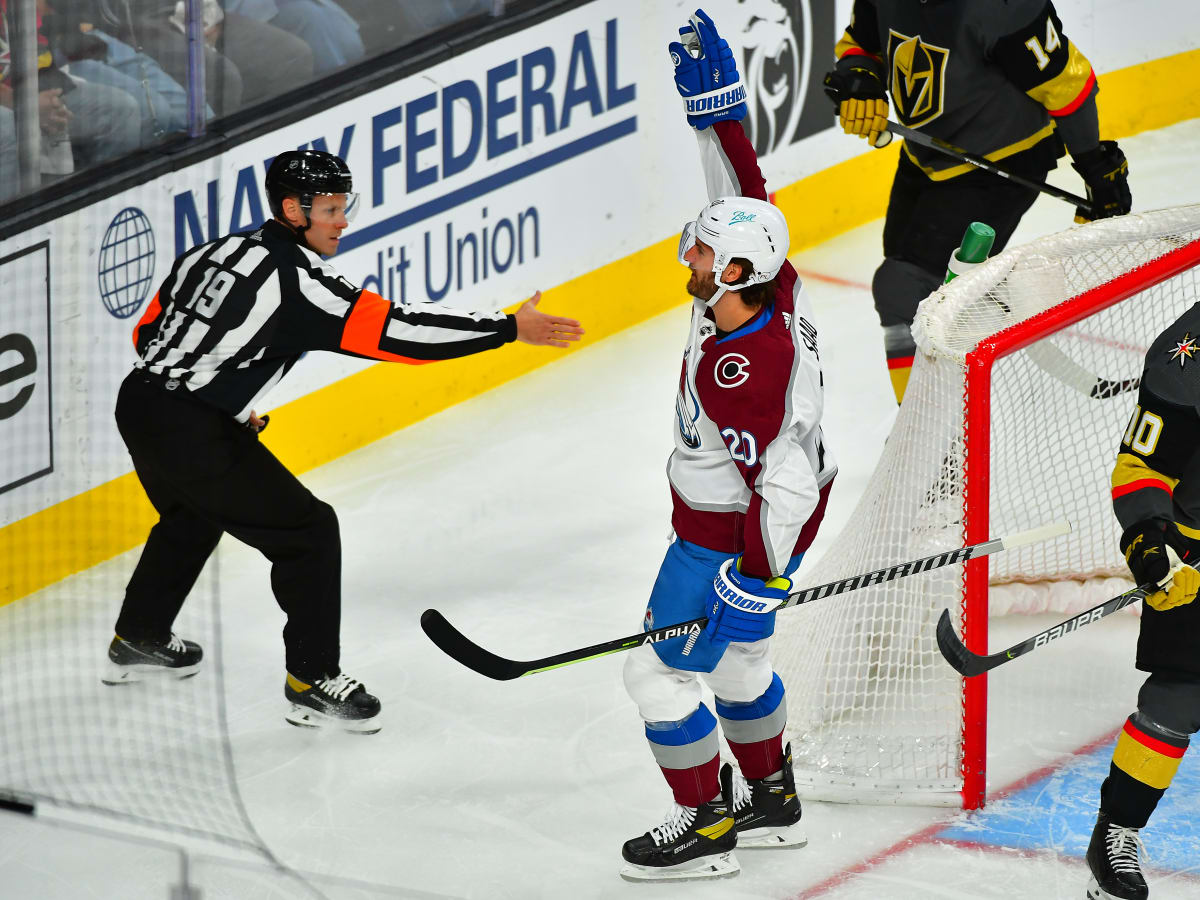
By the numbers, Saad is virtually identical to Zach Hyman. Both are 6’1″, play left-wing, kill penalties, and were born in 1992. Their point-per-minute production at 5-on-5 is identical over the past three seasons, with Saad owning the edge in goals and Hyman holding the edge in assists. While Hyman posted nine more points than Saad during the regular season, Saad carried a clear edge in terms of playoff production.
The Avalanche are going to have a difficult time bringing back Saad. Gabriel Landeskog and Philipp Grubauer are pending UFAs, while Cale Makar is going to get a massive raise as a RFA. Colorado could certainly free up some cap space by trading other players, but at this point, I’d bet on Saad leaving. Given that Saad’s already made over $38 million in his career, it’s easy to see him taking a slight discount in order to play for a playoff team.
Saad scored seven goals in 10 playoff games this year, and it’s possible that a team makes a big offer that can’t be matched. However, it seems like he’ll sign for less term than Hyman, and his regular season counting stats could help to keep his value down. Saad only has four power-play points combined over the past two seasons, so it’s his 5-on-5 value that you’re really paying for.
Ultimately, Saad to the Leafs seems like a good fit. The Leafs can afford to spend $5 million on a first line winger, and Saad carries a winning pedigree that Toronto’s front-office values. I believe that Hyman is a slightly better player, but if you can sign Saad for significantly less term, I think that’s clearly a better option.
Blake Coleman
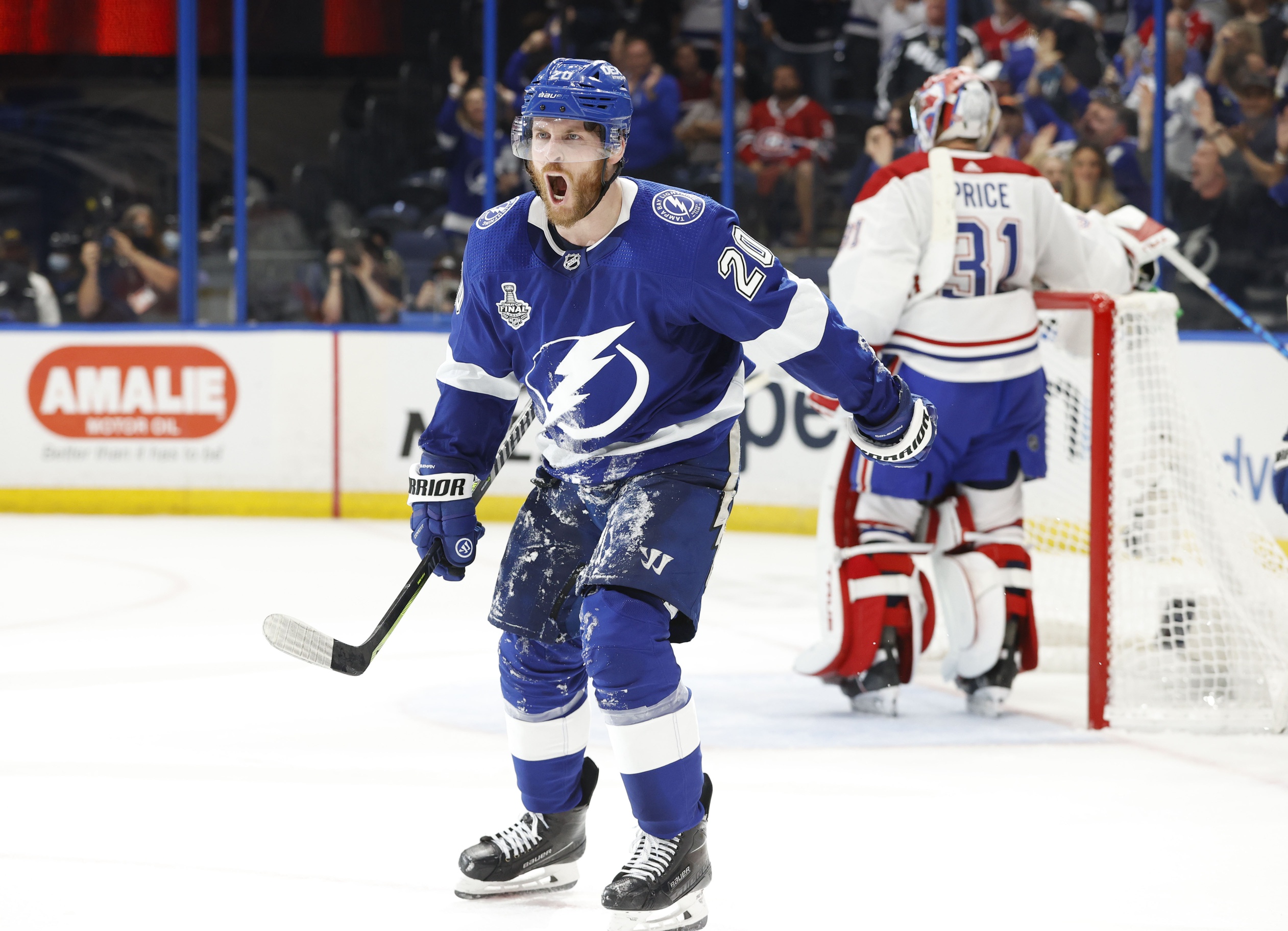
After he won the Stanley Cup in back-to-back years, every hockey fan on the planet knows that Coleman can play at this point. However, it’s worth noting that he’s never scored 40 points in a season. Could his counting stats bring his value down enough to make him affordable? I really have no idea what his next contract will look like, but it’s possible that one team will make a massive offer that can’t possibly be matched.
Like Saad, Coleman does not rack up many power-play points (or minutes). He’s scored just five power-play points over the past three years, which really keeps his overall counting stats down and might help keep his cap hit down as well. However, if you watched the Lightning play in the playoffs, you’ll know that he’s a high-end penalty killer who can match up against opposing top lines at 5-on-5. He also brings plenty of physicality to the table, which could make him a nice replacement for someone like Hyman.
Offensively, Coleman’s calling card is his goal-scoring ability. On a per minute basis at 5-on-5, he’s scored at about the same as William Nylander and Zach Hyman over the past three seasons, and he shoots more than any Leafs player not named Auston Matthews. Coleman’s speed makes him a threat to score off the rush. He has the ability to drive individual offense.
Coleman could be used in a Hyman-like role, helping his team on the forecheck and winning the puck back for his team. However, since he’s not a great playmaker, he might be better off playing on the second or third line rather than with Matthews. I like his ability to drive his own line — he could potentially lead a third line that plays tough minutes.
I think it’s clear to just about everyone that Coleman is a pretty valuable player. Like Saad, his current team is going to have a tough time re-signing him due to their cap situation, so he’s certainly a possible option for the Leafs. He’ll be 30 in November, so a godfather offer could actually make him one of the more overpaid players in free agency. However, if he’ll sign for four years at a reasonable cap hit, he’s a good fit.
Tyler Bertuzzi
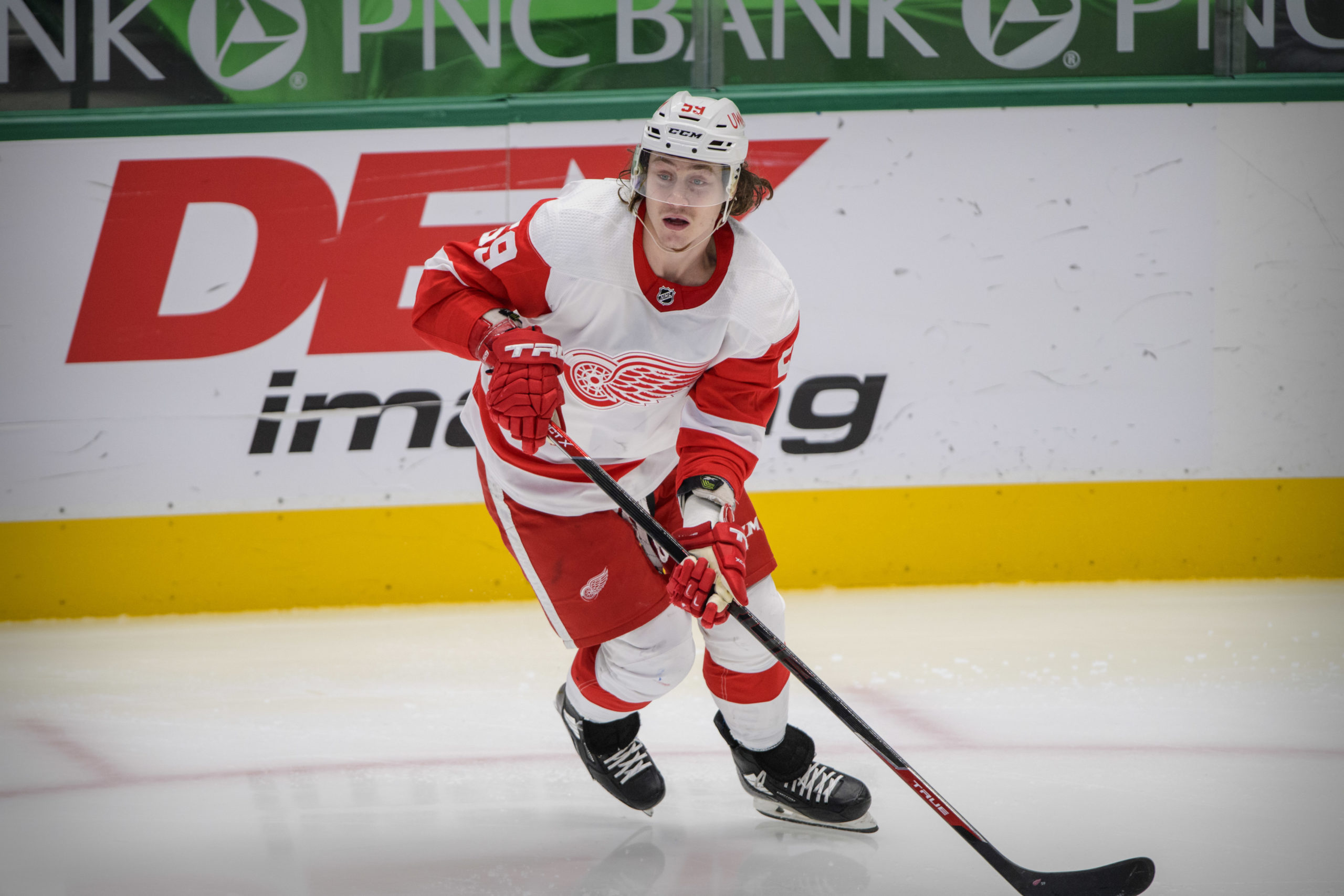
Bertuzzi ranks 99th out of 388 forwards in terms of 5v5 points per minute over the past three seasons. Put another way: He basically has the same scoring production as Zach Hyman. At 5-on-5, their goals per 60, primary assists per 60, and secondary assists per 60 are so similar that it’s almost unbelievable. Like Hyman, he’s 6’1″, hard-nosed, plays on the left side, and hails from Ontario. They even have the same agent.
Bertuzzi played just nine games this season having undergone back surgery in late April. He notched seven points in those nine games and scored around a 54 point pace in each of the previous two seasons (note: he rode a 16% shooting percentage both times). After making $3.5 million this season through an arbitration ruling, given that he only played nine games, I don’t expect him to get much of a raise on a one-year deal.
Bertuzzi has a proclivity for the dirty areas of the ice. He can play the net-front role on the power play, where you could use him in the middle of the 1-3-1 setup as well. I don’t love his transition game — I’m not fully convinced that he can drive his own line — but he’s played well next to Dylan Larkin and Anthony Mantha in recent years.
Bertuzzi is 26, and as a result, he could be a unrestricted free agent next summer. The Red Wings certainly aren’t going to let him walk for nothing, so ultimately, he’ll either sign an extension or be traded. If the Leafs make a trade for him, they could try to extend him long-term, or simply sign him to a one-year deal to keep his cap hit down.
While brings a lot to the table and fits what the Leafs are looking for, he’s probably a slight step down from the majority of players on this list. As this article illustrates, there are plenty of options on the free-agent market that won’t cost picks and prospects. However, his cap hit would certainly be lower than most of the other options listed here, particularly if he signs a one-year deal.
The big question: What does Steve Yzerman want in return for him?
Jaden Schwartz
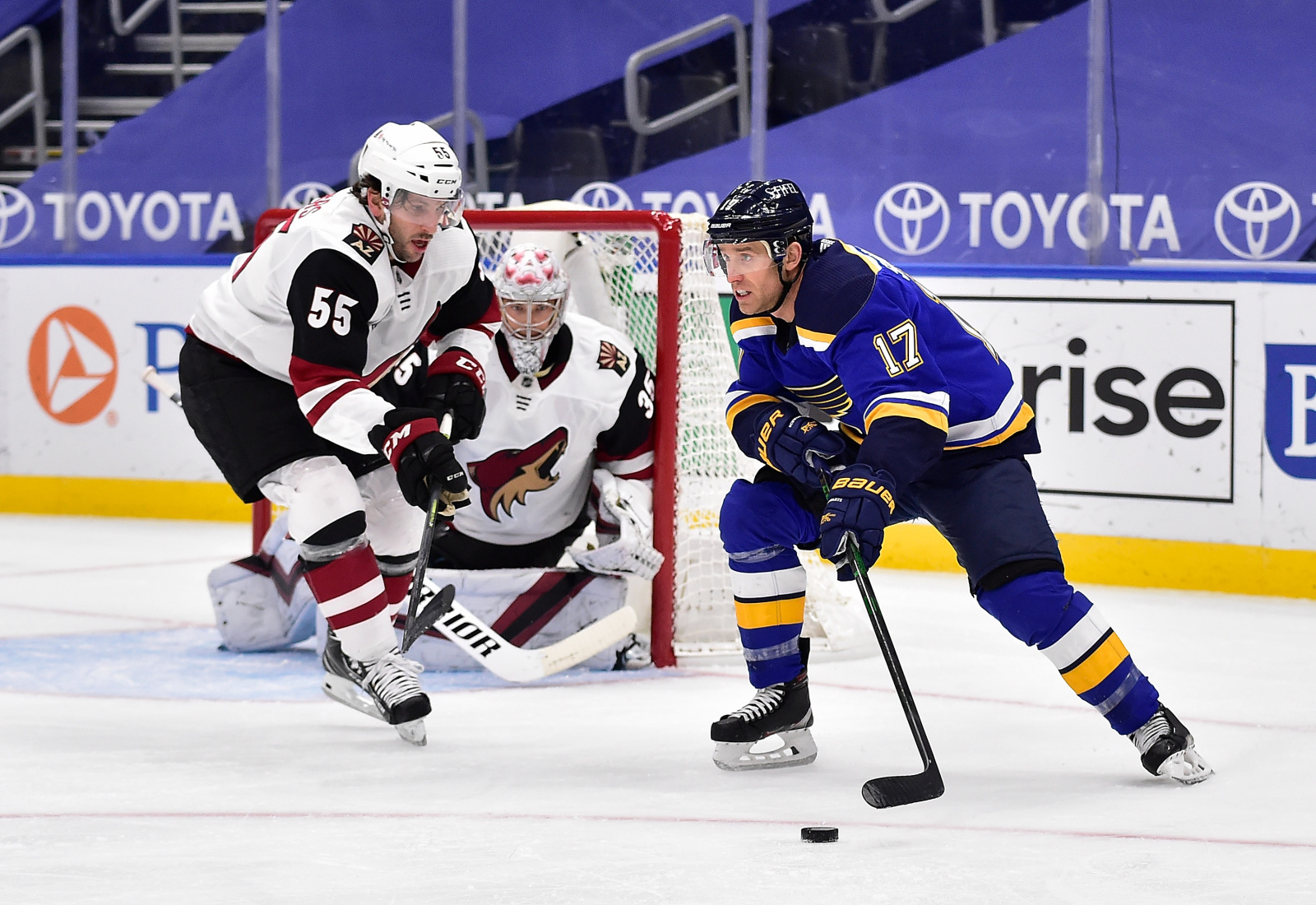
I fully expect Schwartz to re-sign with the Blues, but if he does hit the open market, he’s definitely worth calling about. He ranks 137th out of 388 forwards in terms of 5v5 points per minute over the past three seasons — a tad behind many of the players on this list, but that’s partly due to an unsustainably low shooting percentage back in the 2018-19 season. A well-rounded and winning hockey player, I’d sign Schwartz in a second for the right price.
Schwartz, who regularly grades out well defensively by RAPM, can match up against just about anyone. He’s been more of a backup option on the Blues penalty kill in recent years, but he’s perfectly capable of playing there when needed. He has an ability to get to the dirty areas, and there are no questions about his ability to score in the playoffs — he led the Blues in goals during their Stanley Cup playoff run.
Schwartz scored just 21 points in 40 games this season, which may help to keep his value down a little bit after playing to a 66-point pace before the pandemic shutdown last season. He’s typically a safe bet to notch 50-plus. I see him as a perfect fit to play next to Matthews or Tavares, but given his strong reputation, he might end up being quite expensive.
At 29, Schwartz may be able to fetch a four-year deal. I expect him to come up a bit short of TJ Brodie’s four-year, $5 million AAV contract. Schwartz definitely has the “killer instinct” that the Leafs are looking for, and he’s worth monitoring to see if the price tag ends up cheaper expected.
Warren Foegele
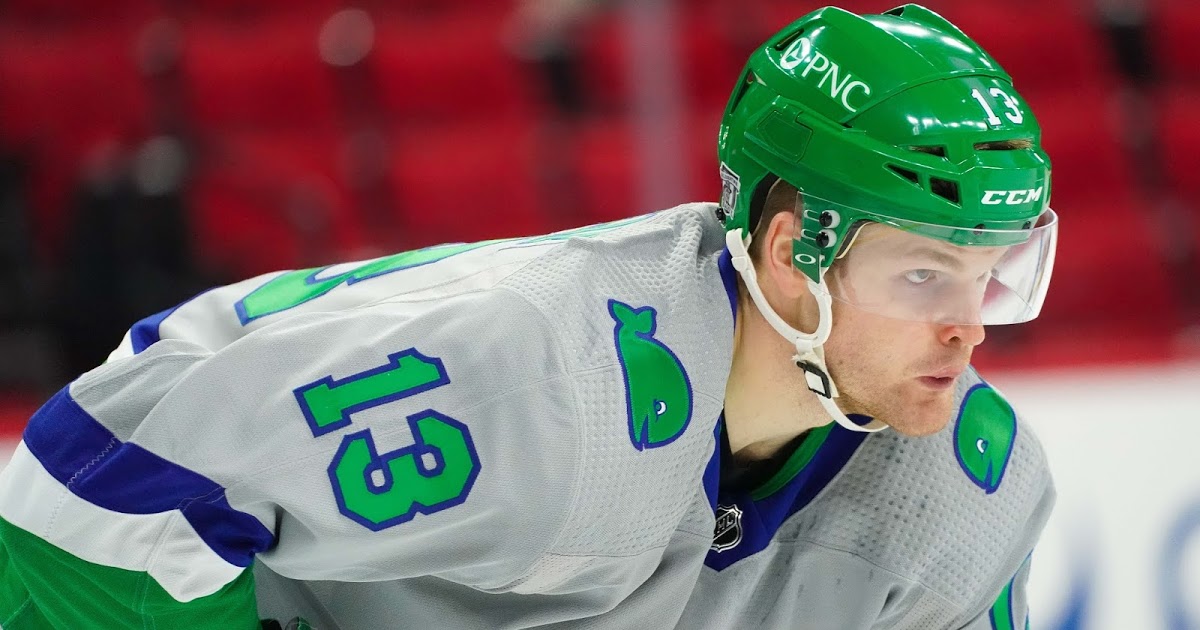
Foegele ranks 228th out of 388 forwards in terms of 5v5 points per minute over the past three seasons, but it’s worth noting that his 2018-19 production drags him down quite a bit there. If we limit this to two years, he’s at least in the same ballpark as Hyman and pretty much identical to Schwartz and Bertuzzi. He’s 6’2″, 25 years old, shoots left, and hails from Markham.
There’s plenty of trade speculation surrounding Foegele, who appears to be hoping to land a bigger role elsewhere. His reputation as a hard-working forechecker would be a natural fit to help replace Hyman. Given that he scored just 20 points in 53 games this season, I don’t expect him to get a massive raise in arbitration after earning $2.15 million this season.
Foegele grades out quite well by Evolving Hockey‘s RAPM, particularly in the offensive end. He could take over Hyman’s minutes on the penalty kill. Offensively, his shot is at least half-decent. I think it’s quite clear that he’s a solid NHL contributor, but he’s probably not a 50-point scorer in most situations.
Having played primarily on a line with Jordan Staal over the past two years, Foegele’s probably best in that kind of role. He reminds me a little bit of Barclay Goodrow, who looked great on a line with Yanni Gourde and Blake Coleman. Any team would take Foegele for the right price, but if the Leafs do land Foegele, he shouldn’t be their only major forward addition.
Tomas Tatar
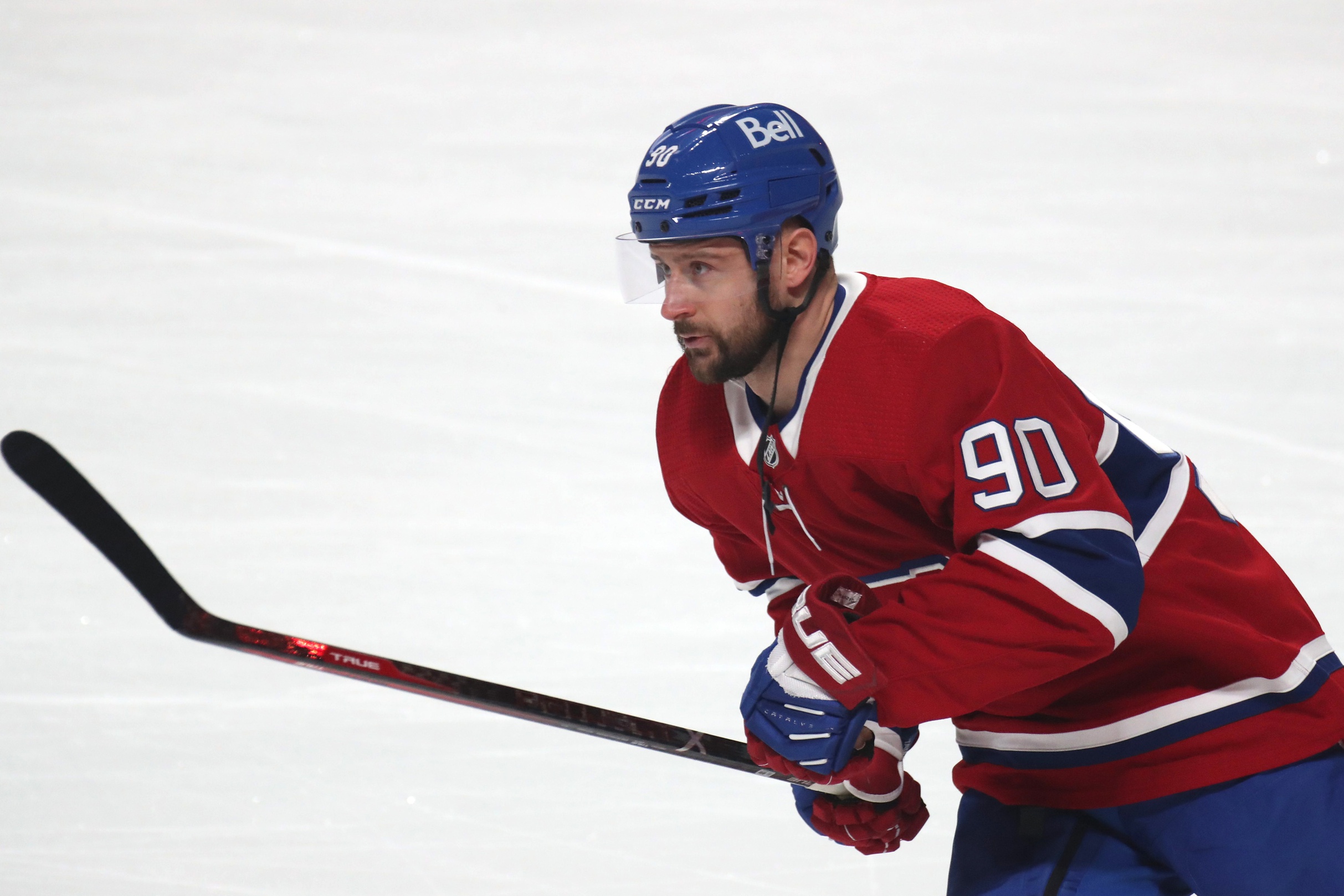
Over the past three seasons, 388 forwards have played at least 1000 minutes at 5-on-5. Just 18 of those players have outscored Tatar on a per minute basis, 17 of which are perennial all-stars (the other is Jakub Vrana). His per minute scoring production is almost identical to Sidney Crosby, Nathan MacKinnon, and Elias Pettersson over this period. It’s not like he’s being matched up against opposing fourth lines, either — he’s frequently matched up against top competition with Phillip Danault.
Tatar, 31 in December, is coming off a down year, at least by his standards. He finished with 30 points in 50 games and ended up as a healthy scratch after posting just one assist in five playoff games. While his counting stats from this season could keep his salary down, and his 5-on-5 production wasn’t quite as strong as it used to be. It’s worth noting that he was still scoring like someone who is clearly a top-six forward.
The Canadian division presented an interesting challenge for Tatar, as he was frequently matched up against some of the top forwards in the game such as Connor McDavid and Auston Matthews. This could partially explain his drop in production at 5-on-5, but his ability to match up against top competition should appeal to teams.
In terms of weaknesses, Tatar isn’t much of a game changer on the power play and he doesn’t kill penalties. He’s only 5’10”, and he’s scored just six goals in 40 career playoff games. He grades out extremely well by Evolving Hockey’s RAPM in each of the past three seasons, so it’s not like he’s an empty-calories type of scorer, but he’s been scratched in the playoffs by both Vegas and Montreal.
His cap hit was $5.3 million over the last four seasons, but Vegas retained $500k of that when they traded him, making it a $4.8 million contract for the Habs. Given his age, I expect him to get a four-year deal at most — three years is probably more likely. I think he’ll end up short of the four-year, $4.25 million deal that Tyler Toffoli signed last offseason. There’s a decent chance that his AAV starts with a three.
Tatar’s scoring production, combined with his ability to drive play, could easily make him one of the bargains of the offseason. The fact that he was scratched by both Vegas and Montreal should keep his value down, but it raises the question: Is there a chance he ends up as a playoff scratch on his new team as well? Ultimately, I think he’ll be worth the gamble, although I’d probably want to add a another power forward if the Leafs ended up signing Tatar.
Alex Galchenyuk
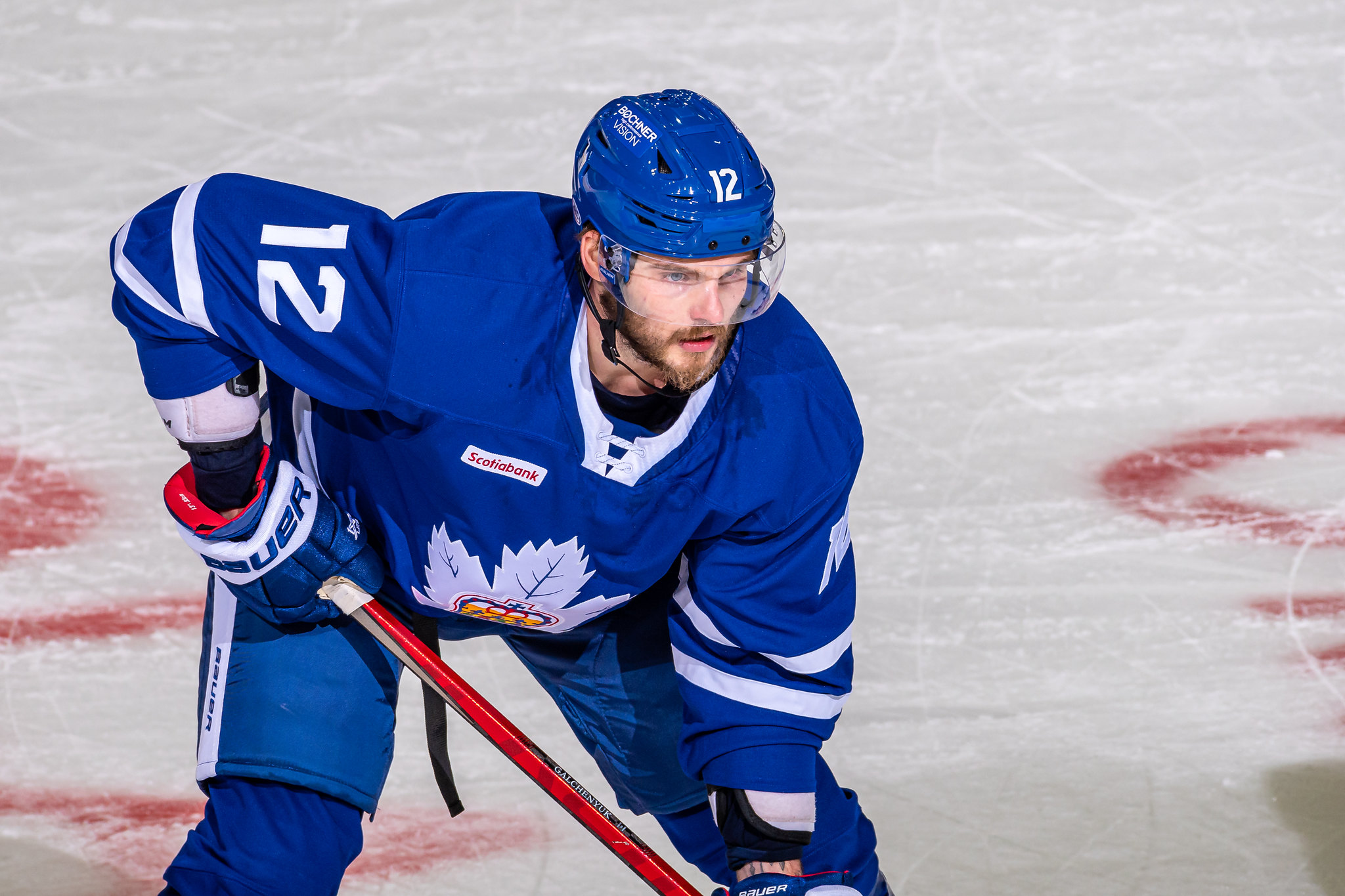
I’d like to see the Leafs re-sign Galchenyuk, regardless of what happens with Zach Hyman, who I don’t really see Galchenyuk as replacing. If Galchenyuk leaves, the Leafs have two holes to fill on the left side instead of one.
Combining the regular season and playoffs, Galchenyuk posted 16 points in 32 games with the Leafs — or 0.5 points per game — with minimal power-play time. He was surprisingly effective on the forecheck as well. While he had a horrendous giveaway in overtime against Montreal, it’s worth noting that he was the star of Game 4 with three points in just 12.5 minutes of ice time.
Galchenyuk proved that he can produce offensively come playoff time, which is certainly worth something. His skating was noticeably improved as a member of the Leafs, he endeared himself to the fans and the organization with his work ethic and intensity, and he seemed to enjoy his time in Toronto. Given that he’s now played on six NHL teams, he might enjoy the stability of staying put.
Per Cap Friendly, Galchenyuk made about $23.5 million over the course of his NHL career, so taking a slight discount certainly seems like a possibility. The Leafs could offer him an opportunity to start in the top six, which leads me to believe he isn’t going to sign elsewhere for an extra $200k. The Leafs have a clear need for cheap depth forwards who can produce offensively. Galchenyuk seems like a perfect fit in that regard.
Given the number of teams he’s played on, there’s certainly some question marks here. He’s weak defensively, and it’s worth noting that Sheldon Keefe made him a healthy scratch to start the playoffs even though he produced well in the regular season. His production in recent seasons doesn’t exactly scream “bargain of the offseason,” but I do legitimately believe that the Leafs helped him develop into a better player.
Conor Garland
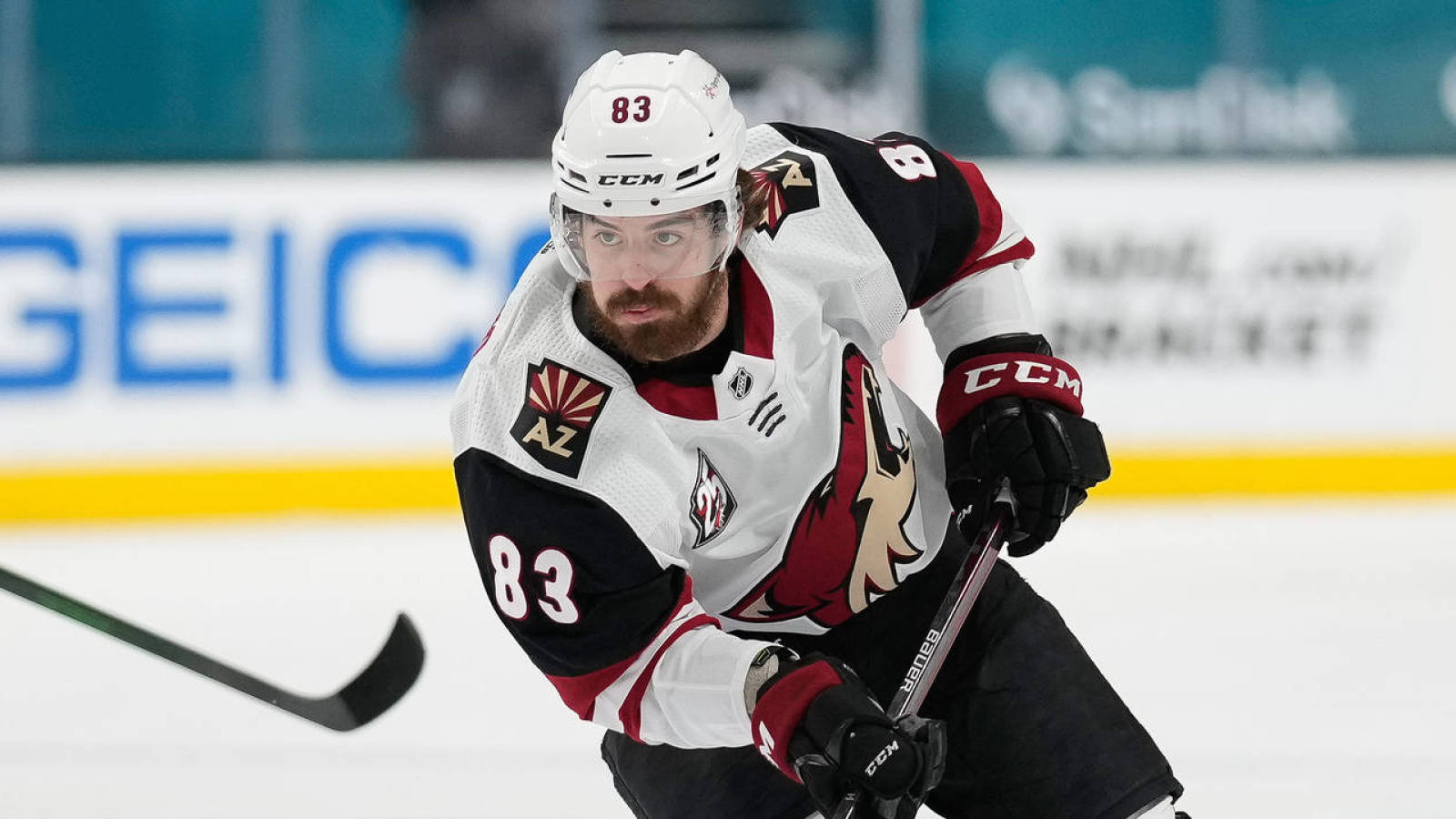
Garland is really damn good, and yet it sure sounds like the Arizona Coyotes could trade him. An acquiring team would own the 25-year-old RFA’s rights for two seasons and could also try to work out a long-term extension.
Garland is not a perfect fit on paper for the Leafs — he’s undersized and plays primarily on the right side — but he’s a phenomenal player who is worth calling about. There’s a legitimate chance that he could surpass the point-per-game mark if he played with Matthews or Tavares.
The Evolving Hockey contract projection tool predicts that he’ll sign a four-year deal with a $4.7 million cap hit. That seems awfully light, and while I think Garland will command a bit more than this, it certainly looks like his next contract could be a bargain. The Leafs would have multiple options here: They could try to lock him up long-term to keep him under team control, or they could try to sign him to a short-term deal to help keep his cap hit down.
On a per-minute basis, Garland’s 5-on-5 scoring production is nearly identical to William Nylander’s over the past two seasons. The eye test backs up the numbers, too. When you watch him play, it’s clear that he’s an incredibly gifted offensive producer. The only question here is price, both in terms of trade assets and cap hit. Arizona will want some good pieces back in a trade.
Given how good Garland is, you have to at least make a phone call or two to see what it would cost.
Mikael Granlund

Granlund ranks 244th out of 388 forwards in terms of 5v5 points per minute over the past three seasons, which comes up a bit shy of Alex Kerfoot. However, he scored at a much higher rate back when he was on the Wild. Still shy of 30 years old, Granlund is also coming off a strong playoff series against Carolina in which he notched five points in six games.
The Finnish forward is a versatile player who can play both center and wing. A good playmaker with two 40+ assist seasons to his name, he plays on both special teams units. However, he’s only 5’10” and he doesn’t exactly match Hyman’s playing style. While the Leafs were rumoured to be interested in him last offseason, he ended up staying with the Predators on a one year, $3.75 million deal.
Ultimately, I see Granlund as a potential replacement for Kerfoot rather than Hyman. He spent a lot of time at center last season, and given Nashville’s lack of depth, I expect him to return there for a slight raise.
That said, Granlund is worth calling about if he hits the open market. I think he’s better offensively than his numbers with the Predators suggest, but the Leafs may want to use him as a third-line center instead. If Toronto does sign Granlund, I still expect them to add a power forward to play on the wing.
Kyle Palmieri
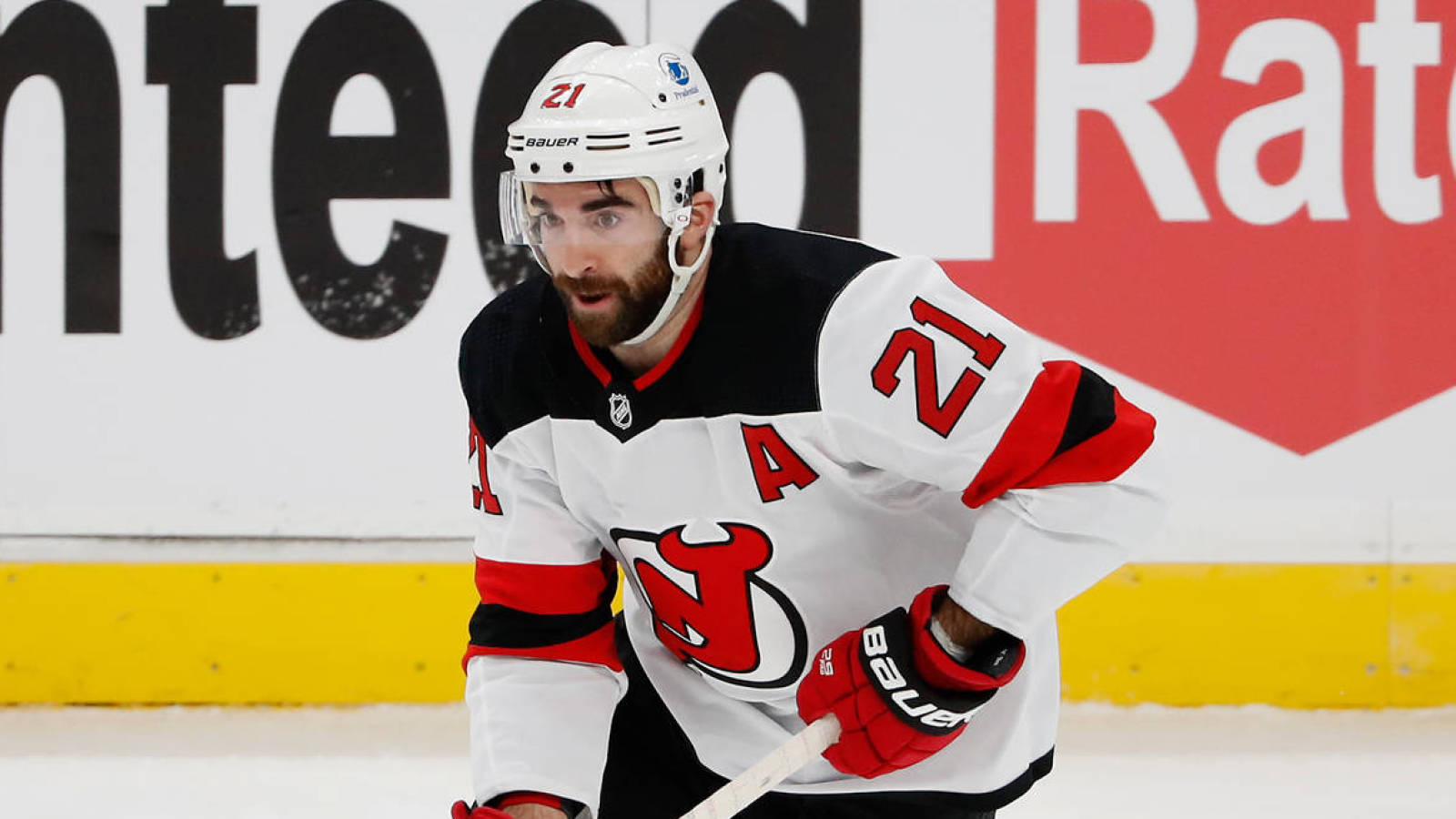
Palmieri ranks 215th out of 388 forwards in terms of 5v5 points per minute over the past three seasons, which is lower than I would have guessed. It was actually this past season that dragged his numbers down — he didn’t have a primary assist at 5-on-5 through 51 games, and his shooting percentage dipped as well. Given that he’s now 30 years old, I expect him to sign for three or four years.
He primarily plays on the right-side, which wouldn’t be ideal in Toronto. However, his right shot could be quite valuable on the power play, where the Leafs lacked strong shooting threats (other than Matthews) on their top unit last season. I do believe that he could really help the Leafs with the man advantage, but I think he’s just okay at 5-on-5 and I don’t love his playmaking skill.
Given the rumours of his preferred destinations around the deadline, we can’t be sure if Palmieri wants to sign in Canada. I’m sure that the Leafs could offer him enough money to change his mind, but I don’t see them entering into a major bidding war. Ultimately, I think this fit is a bit of a long shot.
Miles Wood
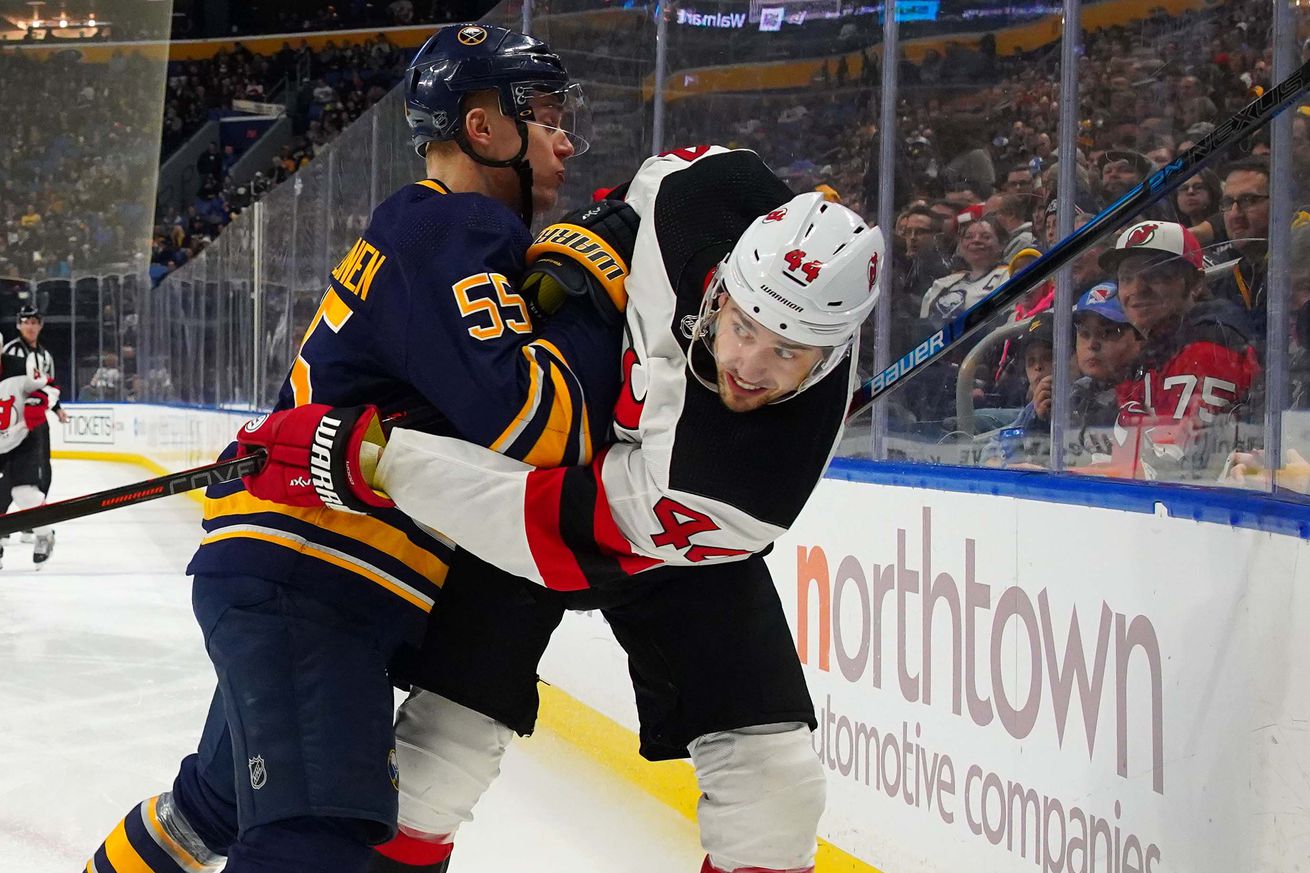
Wood ranks 221st out of 388 forwards in terms of 5v5 points per minute over the past three seasons, which is right around Palmieri and Foegele. Fast and physical, Wood doesn’t kill penalties but could help replace some of Hyman’s value on the forecheck. He makes $2.75 million next season before hitting restricted free agency, but given that his counting stats aren’t all that impressive, I expect his cap hit to remain quite reasonable. He’ll make $3.5 million in actual salary next season, which impacts his qualifying offer for next offseason.
Wood’s speed makes him a dangerous scorer off the rush, reminding me of Kasperi Kapanen or Ilya Mikheyev (if Mikheyev could ever score) in that regard. He was actually on pace to score 25 goals this season, but he’s never been much of a playmaker. Given that he is only 25, the Leafs could try to lock him up to a long-term deal at a reasonable cap hit.
Of course, the Devils are under no obligation to trade him, so you’d have to make it worth their while. However, I do believe that his $2.75 million cap hit makes him an interesting option for the Leafs. His primary linemates were Michael McLeod and Nathan Bastian this season, and given his lack of playmaking skill, he might fit best as Toronto’s version of Blake Coleman.
Perhaps the Leafs could use him on their third line where he could try to bring more secondary scoring to the table. While I wouldn’t be opposed to giving Wood a shot in the top six, there’s plenty of risk there. It’s tough to get a read on him by RAPM, where he graded out as horrendous defensively in the 2019-20 season but rebounded nicely this year.
Ultimately, I think Wood is a good fit, but it all comes down to the acquisition cost.
Other Options
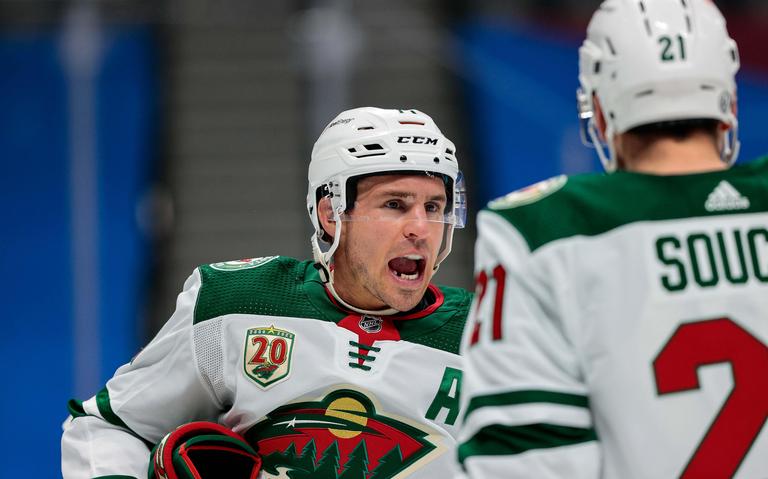
Mike Hoffman is a free agent, but I don’t think he’s very good at 5-on-5. He’s an outstanding goal scorer on the power play, but he shoots left and the Leafs already have a left-handed one-timer threat on their top unit. He’s the complete opposite of Zach Hyman in terms of playing style, so it’s tough to view him as a possible replacement.
Timo Meier has two years left on his deal at $6 million. However, his actual salary in the 2022-23 season is $10 million, so it’s tough to picture him receiving a qualifying offer. I think he’s a pretty good player, but his cap hit is quite pricey, and I’m not sure the Leafs would be eager to pay a haul to acquire him. He’s worth looking into, but he looks like a long-shot.
I’d love to add J.T. Miller or Ondrej Palat, but I don’t see those trades happening. Players like Travis Konecny, Andrew Mangiapane, and Jared McCann would also be fun, but I don’t think any of them will end up being moved. I wrote about McCann in my article about potential options for the third-line center role, but he could certainly be a fit as a top-six winger as well.
Barclay Goodrow is another name that many will bring up, but I think he’s going to get overpaid in free agency. Gabriel Landeskog would certainly be fun, although I just can’t see him signing with the Leafs given their cap situation.
Zach Parise was one of my favourite players growing up, and given that he’s made over $100 million in his career, I expect his decision to be driven by opportunity and location rather than money. I’d happily take him on a cheap deal, but I’ll guess that he signs with either Pittsburgh or Tampa Bay. A reunion with Lou Lamoriello in New York is also possible, but he is worth calling about. However, even if the Leafs do sign Parise, they may still need to add another top-six winger.
The other two options that are worth mentioning are Taylor Hall and Filip Forsberg, who were both rumoured to be potential options at the trade deadline. I already wrote about Hall here and Forsberg here, so I’ll keep this brief. Hall is set to be a free agent, and while it’s tough to believe he’ll get less term than Hyman, it sure seems like it will be the case. He should command a cap hit above $6 million, and I expect him to stay in Boston after the Leafs didn’t trade for him at the deadline.
While I’m the president of the Forsberg fan club, he’s got one year left on his deal, and who knows if the Predators will look to move him?
Nick Foligno is also worth mentioning here, but if he takes a discount to stay in Toronto, I’d still like to add another top-six winger to help replace Hyman.
Ultimately, it should be an interesting offseason for the Maple Leafs. The team has major holes to fill in their lineup without many draft picks to use as trade currency. Zach Hyman is a valuable player who every Leafs fan appreciates, and Kyle Dubas has his work cut out in an attempt to replace him.














![John Gruden after the Leafs prospects’ 4-1 win over Montreal: “[Vyacheslav Peksa] looked really comfortable in the net… We wouldn’t have won without him” John Gruden, head coach of the Toronto Marlies](https://mapleleafshotstove.com/wp-content/uploads/2025/09/gruden-post-game-sep-14-218x150.jpg)








